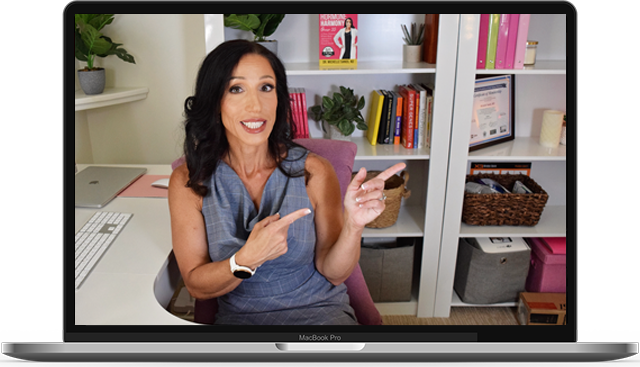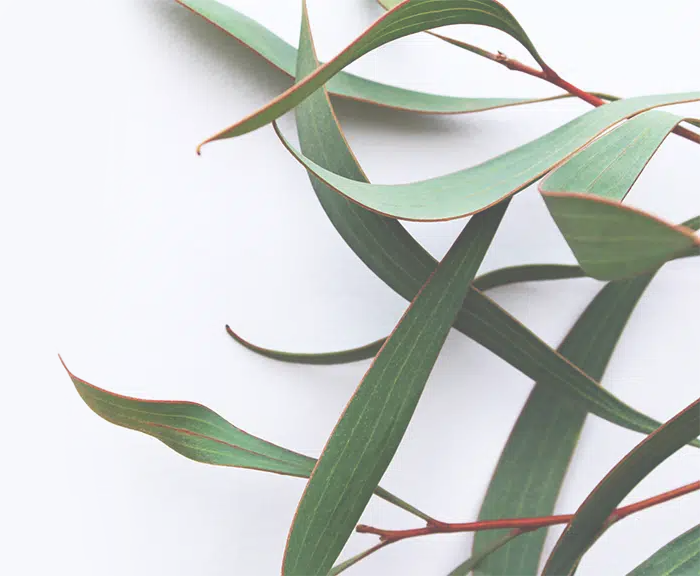Finding out you have a fibroid can be scary, but it doesn’t have to be.
Don’t worry, you are not alone. In fact, according to the American Journal of Obstetrics and Gynecology, between 80% and 90% of African American women and 70% of white women will develop fibroids by age 50. As common as they are, most women can go into a bit of a panic and have no idea what to do if they get one. Remember, everything always seems scarier when we don’t understand it. The good news is, with a little bit of knowledge, and applying a few simple, natural protocols, you can effectively (and fearlessly) treat fibroids.
So, what the heck are fibroids anyway?
Uterine fibroids are benign tumors that develop in the wall of the uterus. Benign means they are non-cancerous growths. Fibroids can range in size from tiny (the size of a pea) to very large (the size of a melon). Symptoms can vary from woman to woman, with some women experiencing no symptoms at all, while others suffer from heavy or painful periods, bleeding between periods, low back pain, painful intercourse, and infertility.
There isn’t concrete evidence on exactly what causes a fibroid to form, however, what we do know is that they are affected by our hormones. An overabundance of estrogen in the body can make them grow. This is why they will often decrease in size after menopause (when overall body estrogen is lower). One of the best ways to treat uterine fibroids naturally is to address estrogen excess—or estrogen dominance.
Estrogen dominance is the most common hormone imbalance today. It occurs when there is too much estrogen in the body, or simply too much estrogen in relation to progesterone. Many factors can contribute to estrogen dominance such as our diet, lifestyle, stress, sleep, household, and personal care products, the use of plastics, and exposures to chemicals. In fact, there are many endocrine-disrupting compounds all around us that can contribute to hormone imbalances like estrogen dominance.
Fibroids Signs & Symptoms
Symptoms of uterine fibroids can vary significantly between women. Many women experience no symptoms at all, while others experience symptoms severe enough to interfere with their daily lives. The most common fibroid symptoms are:
- Abdominal discomfort and fullness
- Heavy periods
- Prolonged periods
Bleeding in between periods - Pelvic pain
- Lower back pain
- Constipation
- Frequent urination
- Difficulty emptying the bladder
- Infertility
- Complications during pregnancy
- Pain during intercourse
Who is at Risk for Fibroids?
Several risk factors can increase your chances of developing fibroids.
Obesity
Obesity (weighing more than 20% over your healthy body weight) significantly increases the likelihood of fibroids.
Ethnicity
Race and ethnicity are also strongly correlated to the prevalence of uterine fibroids. For example, fibroids are 3x more prevalent in women of African descent.
Hereditary
Fibroids also tend to run in families, and these hereditary fibroids seem to come with increased severity of symptoms.
Other Risk Factors
Age of menarche, premenopausal age, and pregnancy history are all factors associated with the risk of developing fibroids.
What Causes Fibroids to Grow?
Science doesn’t yet know the exact cause of uterine fibroids. However, research seems to be pointing to the following possible reasons:
Genetic Factors
Fibroid cells have been shown to have chromosomal abnormalities in comparison to their healthy uterine cell counterparts.
Hormones
Hormones may also play a role, specifically estrogen and progesterone. Fibroids contain more estrogen receptors than healthy uterine cells do. Fibroids also typically shrink after menopause when the overall hormone production decreases. Many times progesterone replacement is used balance things out and to shrink fibroids.
Lifestyle Factors
Other lifestyle causes are likely playing a role as well. For example, diet seems to play a substantial role in the development of fibroids, specifically low fruit and vegetable intake and the consumption of alcohol.
Vitamin D deficiency has also been significantly associated with the prevalence of uterine fibroids.
The Conventional Approach to Treating Fibroids
In conventional medicine, a diagnosis of uterine fibroids often means one of two things: Number one, a prescription for the birth control pill. That’s because most doctors consider the pill a way to control the growth of fibroids and the symptoms you’re experiencing. The problem is that “the pill” does nothing to address the actual cause of the fibroid or improve your uterine health. Instead, the pill delivers even more endocrine-disrupting compounds to mask the problem. Crazy fact: One of the main reasons for the noticeable rise in estrogen dominance in the past few decades is the popularity of the birth control pill. Treating estrogen dominance with a pill that contributes to it is just silly.
The second option that conventional medicine offers women with fibroids is surgery. I believe that most of us would want to avoid surgery unless it is absolutely necessary. Surgery is no fun and comes with its own complications and risks, including leaving behind scar tissue that can interfere with your ability to get pregnant.
The Less Scary Natural Strategies For Fixing Fibroids
At Glow Natural Wellness we believe in a holistic root-cause approach to healing; fibroids are no different. It is important to note that immune issues, adrenal and thyroid dysfunction, and insulin resistance can all stem from unresolved estrogen dominance. This is why a band-aid approach is not the best idea.
To treat fibroids and alleviate symptoms, the first step is to make food and lifestyle choices that support your body in eliminating excess estrogen as efficiently as possible. The goal is to bring estrogen levels back into balance.
The 6 Simple Steps To Naturally Treat Fibroids
To heal fibroids, you need to address one of the underlying causes of the issue: estrogen dominance. That’s the best way to stay fibroid-free for the future. This natural healing isn’t complicated, but it requires several steps, including eating in a way that flushes estrogen, elevates your progesterone levels, eliminating sources of synthetic estrogen from your life — like pesticides, chemical-based beauty products, and cosmetics, and conventional household cleaners — and supporting your body’s natural detoxification and elimination systems.
Here are the 6 steps to naturally healing your fibroids:
1. Cut out chemicals.
Research suggests that endocrine-disrupting chemicals — like those found in everyday cleaning supplies, cosmetic products, lawn treatment chemicals, vinyl products (like shower curtains and cleaning gloves), and plastic food containers, water bottles, and plastic food wrap — are strongly linked to the development of uterine fibroids. Thousands of man-made products contain compounds known as Xenoestrogens, (estrogen mimickers) which disrupt your natural hormone balance.
I know that making all these changes can sound overwhelming, but avoiding these chemicals is easier than ever with a variety of chemical-free and essential oil-based products now available. When examining your own products look for ingredients such as parabens, phthalates, benzophenones, triclosan, and parfum or fragrance. If you’re still using plastic food storage containers, you can replace them over time with glass and stainless steel options (which last a lifetime); same with a shower curtain made of healthier material.
2. Support your microbiome.
If you’ve followed me for any length of time, you have heard of the microbiome or the families of bugs that live in the gut. You may not know that there is an entire subsection of the microbiome dedicated to the metabolization of estrogen. This colony of bacteria is called the estrobolome; and when the microbiome is healthy, so is the estrobolome. But when the ratio of good and bad bugs in the microbiome is out of balance (also known as gut dysbiosis), the estrobolome can’t do its job efficiently and estrogen builds up in the body. In other words, a gut microbe imbalance can contribute to estrogen dominance and turn into the development and growth of fibroids. Take care of your microbiome by avoiding conventional dairy, conventional animal products, sugar, and gluten. (Try the 21 Day Metabolic Rehab to help you break free from these foods and help your body get back into balance) Another key to microbiome health is taking a high quality probiotic.
3. Love your Liver.
The estrobolome metabolizes used-up estrogen and sends it to the liver to get it ready for elimination. So, if your liver is sluggish (just like if your microbiome is imbalanced) estrogen can build up in the body — and, once again, you’re facing estrogen dominance. You can support your liver with the right foods and avoiding caffeine and high fructose corn syrup. Additional herbs like milk thistle, dandelion, and glutathione can support the liver in doing its job.
4. Weight Loss
Losing weight might be a great start to help slow down the growth of your fibroids. While we don’t have scientific evidence of fibroids shrinking after weight loss, we do know that there is a significantly increased risk of developing fibroids during premenopausal years if you are obese. This happens because fat cells make high amounts of estrogen. Losing weight may help prevent or reduce the size of fibroids.
5. Nutrition
Whether weight loss is appropriate for you, proper dietary choices are still important.
A comprehensive review of the literature led to these conclusions that the following nutritional choices were linked to a higher risk of uterine fibroid formation:
A low intake of fruit and green vegetables
Vitamin D deficiency
Pollutants ingested with food increase uterine myoma risk
More specifically, research has shown a significantly reduced risk of fibroids in women who ate two or more pieces of fruit and ate food rich in vitamin A.
6. Test Your Hormones.
Test your hormone levels with a Hormone Trio Test and determine if you need to boost progesterone levels. For women in perimenopause or menopause, this may require bioidentical micronized progesterone.
Start hormone healing (and fibroid fixing now)
Whether you are experiencing (or hoping to avoid) fibroids or are dealing with one or more of the other common symptoms of estrogen dominance such as PMS, painful breasts, weight gain, endometriosis, irregular cycles, fatigue, reduced sex drive or depression, it’s time to take control naturally. And I am here to support you!
I created the 21 Day Metabolic Rehab and Hormone Makeover as a simple, natural 3 phase estrogen detox plan designed to love-up your liver, eliminate endocrine disruptors, and nourish your body with whole real foods. Also included are breathwork and mediations, natural at-home detox protocols, as well as journaling – all designed to rehab your metabolism and balance your hormones, naturally. You’ll have step-by-step instructions, video training, meal plans, guides, and tools to support you every step of the way.






